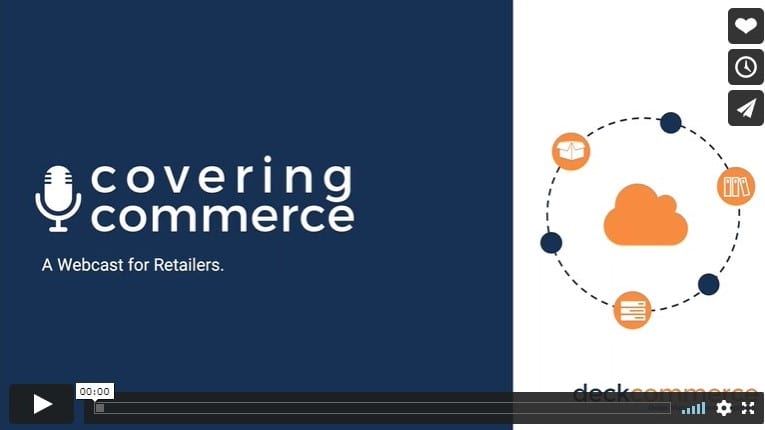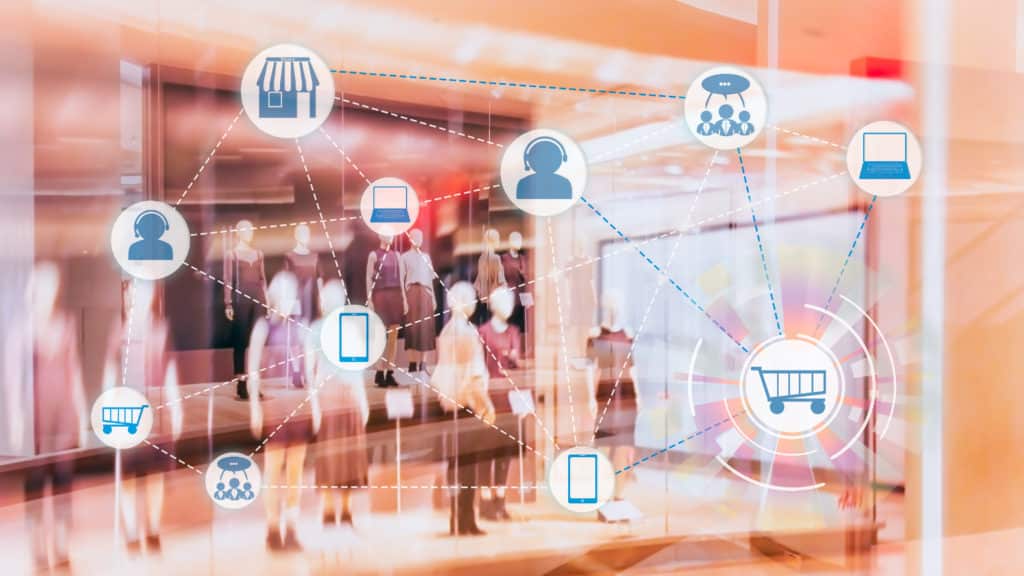
Retail Experts Discuss Commerce During the Pandemic
The major question on every business owner's mind over the past 10 weeks is relatively simple to ask but rather more difficult to answer: what does commerce look like after a pandemic that keeps everyone at home?
Although we've looked at the acceleration of eCommerce in recent weeks, it's always interesting to gather opinions from retail experts across the spectrum of commerce. That's why it was exciting to have our Chief Commercial Officer Noah Sange participate in a discussion with retail experts from Capgemini and Deck Commerce, exploring the difficult reality of retail during a pandemic and what we can expect to see as we move towards the next phase of retail.
Covering Commerce Episode 1:

Expert Insights on Commerce During the Pandemic
Click here to watch the full conversation.
Retail Experts Dissect the Challenges of Post-Pandemic Commerce
"Buying patterns are going to be fundamentally changed," says Chris Deck, CEO and Founder of Deck Commerce, a sophisticated order management system (OMS) that powers the omnichannel strategies of high-volume brands. Neatly summarizing the challenges ahead, he continues by explaining that "new ways of engaging with the customer and re-imagining how bricks and mortar stores [are used to this end] will be a key driver for the next phase of retail."
Our own Noah Sange agrees, calling the pandemic conditions a "quantum leap" for physical retail adapting to eCommerce. Noting that Capacity has seen B2B volumes dwindle while online orders spike to Black Friday-like levels, eCommerce has clearly been a lifeline for brands that operate in both channels. At the same time, physical retail shipments are slowly beginning to edge their way back, although Noah emphasizes that the reality of in-store purchases will look a lot different when customers return. In the meantime, brands that are able to go direct-to-consumer (DTC) need to make the most of this opportunity to find, win, and keep new customers.
Emphasizing the transition to a new phase of retail, Danielle Savin points to Nordstrom as an example of an established store brand showing signs of agility in this dynamic marketplace.
As the Senior Digital Marketing Director at Capgemini, DCX, Savin is an experienced voice in the world of retail and works for one of the top digital transformation solution providers. As such, she has a keen eye for the brands best positioned to make it through the challenge of pandemic retail. Smaller format stores and Warby Parker-esque product trials via creative omnichannel fulfillment are two aspects of Nordstrom's approach that Danielle points to as an example of this agility.
"It's about being nimble and flexible, [creating] the right supply chain and getting [products] to your house any way you want it," she concludes.

Which Brands Have Done Well During the Pandemic?
Along similar lines, the next question asked of the panel was what commonalities can be identified between brands that have fared well throughout the pandemic.
Brands like Zoom and Amazon were, of course, the immediate beneficiaries, as people stuck at home went online to meet and order essentials. Beyond that, personal care, health, wellness, and beauty brands with the ability to sell online were also well-positioned to step into the space left by the closure of many physical retail options.
What Chris Deck finds more interesting are those who didn't have the perfect tools to handle the pandemic yet still managed to come out in a strong position. He attributes this success to "adaptability; companies that have been able to leverage their technology to change their supply chain and engage with customers." He sees brands with these traits - and the people to act on them - as the most capable to adjust to changing marketplace in real-time.
Again, Noah Sange agrees on this point and emphasizes its importance from the supply chain perspective. Explaining that even eCommerce channels with the vast resources of Amazon had to pull back and focus on just shipping essentials at the height of the pandemic, he points to sellers who fell into the non-essential category as a valuable example of why brands need other options. Those with their own eCommerce channels and strong, direct relationships with customers had a much easier time adjusting than those who relied solely on Amazon.
Automation also helps a lot when some workers can't come in and those who can need to maintain social distancing safety measures. Brands who had access to the technology available from fulfillment partners like Capacity, such as systems from Lightning Pick and Righthand Robotics, were able to come up with pick and pack solutions that didn't suffer from the same slowdown as more manual service providers.
In summary, he echoes Chris Deck's point about the importance of adaptability and implores brands that have been dragging their feet on eCommerce fulfillment to act quickly. Third-party fulfillment partners are ideally placed to help these companies diversify their channels and navigate a way through whatever remains of the pandemic and on to a stronger, more adaptable business footing when all this is over.

How Can Brands Prepare for Disruption?
No good discussion between retail experts would be complete without a nod to planning and preparation. Forecasting order volumes and trying to predict future trends are par for the course, though no-one could realistically be expected to plan for the events we've seen in recent months.
Nonetheless, preparing for disruption is clearly essential and the impact of pandemic conditions should be enough to convince even the most laissez-faire executive that a little planning goes a long way.
For our own Noah Sange, it comes down to a robust infrastructure and a willingness to lean on logistics partners. He offers the following as some fundamentals of a good supply chain and, by extension, traits of a business that is prepared for potential disruption:
1 - Business Continuity Planning (BCP) - Have a written plan for what you're going to do when problems occur. Create BCPs for all your customers (and cover various scenarios, from natural disasters and power outages to situations like the pandemic, which are tougher to define).
2 - Create backups - IT redundancy, data storage backups, alternative warehouses and third-party provider options should all come into consideration for retailers who want to mitigate the risk of disruption.
3 - Allow for flexibility - Work with (and actively hire) adaptable people who can shift from established routines to creative solutions at the drop of a hat.

Chris Deck adds considerations such as thoughtful process planning and investing in new technology as factors that enable brands to move or adjust more quickly.
All of which points back to Deck's initial observation that the ability to adapt is key. For Chris, companies able to take established, effective ways of doing things and layer in technology are those who will get the best of both worlds when unexpected situations arise.
Danielle Savin sums up the conversation by adding that brands need to take more responsibility for understanding that where they've been is rarely where they're going. Minor adjustments to existing strategies are often insufficient when major change occurs, which is part of the reason we're seeing so many retailers who were already struggling now pushed to the brink by pandemic conditions.
“Retailers are always trying to catch up to consumer behavior that has changed. I think it’s really important to create a roadmap ahead of time versus postmortems after the fact.”
Capacity would like to thank Deck Commerce for hosting such a valuable conversation, with retail experts from diverse parts of the sector lending their voices. We hope you find their takeaways valuable and would love to continue the conversation if you could use some help re-imagining your supply chain and eCommerce fulfillment solutions right now.
You can contact us here and also visit Deck Commerce for more information on their order management solutions.
See our related post.